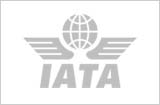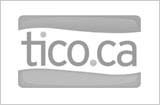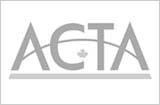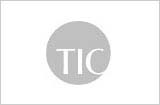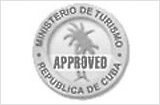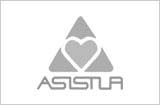A Spanish Colony
The history of Cuba stretches back centuries, with the island being inhabited by three different cultures before the arrival of Europeans: the Ciboneyes, the Guanahatabeyes, and the Tainos. Among these, the Tainos were the most advanced, engaging in activities such as fishing, hunting, and agriculture. They cultivated a variety of crops including maize (corn), yams, beans, squash, yucca, cotton, and tobacco. Skilled in woodwork and pottery, they crafted intricate pieces that showcased their artistic abilities. It is estimated that around 100,000 native Indians called the island home before the Spanish arrived.
When Christopher Columbus embarked on his voyage in 1492 to find a new route to the Orient, he discovered the island of Cuba on October 27. The exotic beauty of the land left him spellbound, and he eloquently described it as "the most beautiful land human eyes have ever seen" in his essay about the discovery of Cuba. Being unfamiliar with the territory, Columbus initially believed he had reached Asia due to Cuba's size and diverse landscape. However, it wasn't until 1508 that Sebastián de Ocampo, another Spanish navigator and explorer, circumnavigated the island, proving that it was, in fact, an island.
In 1511, Diego Velázquez de Cuéllar set out with an army of 300 men from the island of Hispaniola, east of Cuba, with orders from Spain to conquer the island. The new settlers faced resistance from the local Taíno population, led by Hatuey, a chieftain who had sought refuge in Cuba from the brutalities of Spanish rule on Hispaniola. Hatuey was eventually captured and burned alive, and within three years, the Spanish gained control of the island.
Diego Velázquez established seven main settlements in the new colony, including Baracoa, Bayamo, Santiago, Puerto Principe, Trinidad, Sancti Spiritus, and Havana. It was Havana's superb harbor, strategically positioned at the mouth of the Gulf of Mexico and offering easy access to the Gulf Stream, that turned the village into the capital of the New World. Cuba's geographical location made it a transit point for Spanish treasure fleets carrying the riches of the colonies back to Spain. Consequently, the island attracted the attention of pirates, such as Frenchman Jacques de Sores, who attacked Havana in 1555.
By the mid-16th century, the native population of Cuba had dwindled significantly due to factors such as slavery, malnutrition, diseases, suicide, and overwork. Consequently, the Spanish turned to African slaves for labor. Although there was little gold in Cuba, the agriculture industry thrived. Cattle raising and tobacco became the prominent industries, while sugar cane cultivation expanded after Columbus's second voyage. However, the growth of the sugar industry was limited by a lack of slaves.
In the second half of the 18th century, Spain became embroiled in the Seven Years' War between Britain and France. The British captured Havana in August 1762, holding the island for eleven months before returning it to Spain in exchange for Florida in July 1763. This occupation exposed the local landowning class to the economic potential of trading their commodities with England and North America, serving as a catalyst for Cuba's transformation into a slave plantation society.
The aftermath of the French Revolution saw slave uprisings in nearby Haiti, prompting French planters to flee to Cuba, bringing their expertise and setting up coffee plantations. This move, coupled with modernization in the Cuban sugar industry, transformed Cuba into a major sugar exporter. The demand for labor led to a massive influx of African slaves, especially after 1793. The island was under absolute military control, with a colonial elite capitalizing on the profits generated by the sugar industry.
By the mid-19th century, Cuba was responsible for one-third of the world's sugar production, heavily reliant on African slaves for labor. Diplomatic pressure from Britain forced Spain to agree to end the slave trade, but the importation of African slaves continued unabated. It is estimated that nearly 400,000 Africans were brought to the island between 1835 and 1864. Slavery in Cuba wasn't abolished until 1886, marking a significant moment in the island's history.
The history of Cuba is a tapestry woven with the stories of indigenous peoples, European exploration, colonization, slave labor, and economic development centered around sugar production. Understanding this complex history provides insights into the island's cultural heritage and the challenges it has faced and overcome throughout the centuries.
The Fight for Independence
The Cry of Yara, also known as the Grito de Yara, marked the beginning of the first major conflict for Cuban independence on October 10, 1868. The rebellion was initiated by Carlos Manuel de Céspedes, a landowner, who made the historic proclamation at his sugar plantation La Demajagua in the province of Oriente. Céspedes emancipated his slaves and declared war against Spain, sparking what would be known as the Ten Years War.
With the support of local landowners, the rebellion quickly gained momentum and spread throughout eastern Cuba. By the end of October, the rebel army had grown to a staggering 12,000 soldiers.
The rebels achieved their first significant victory by capturing the city of Bayamo on October 20, just ten days after the war began. Bayamo was designated as the capital of the Republic in Arms, and it was here that Cuba's National Anthem was sung for the first time.
During the first year of the war, a young man named Antonio Maceo emerged as a prominent figure, rising to the rank of lieutenant colonel in the Liberating Army. Maceo garnered admiration and support from both black and white Cubans.
Maximo Gomez, a former cavalry officer for the Spanish Army in the Dominican Republic, played a crucial role in the Cuban forces. His exceptional military skills introduced the formidable machete charge tactic, making him one of the key leaders in the quest for independence.
In 1878, the Convention of Zanjón brought an end to the war. While the agreement granted freedom to enslaved individuals who fought in the conflict, slavery remained intact, and Cuba continued under Spanish rule.
The following 17 years witnessed ongoing tension between the Cuban people and the Spanish government. During this period, significant capital investments from the United States began flowing into the island, particularly into the sugar, tobacco, and mining industries. By 1895, the total investments reached a substantial 50 million U.S. dollars. Despite its political affiliation with Spain, Cuba started relying economically on the United States.
On February 24, 1895, a notable independence movement was initiated by José Martí, a young poet and revolutionary. Assisted by veterans from the previous war including Antonio Maceo, Maximo Gomez, and Calixto Garcia, Martí led the charge for Cuba's independence. Unfortunately, Martí's life was cut short in May of the same year when he was fatally shot by the Spanish army. Nevertheless, his sacrifice made him Cuba's esteemed National Hero.
Learning from the mistakes of the initial war of independence, Gomez and Maceo decided to launch an invasion of the western provinces. Over the course of 90 days and 78 marches, their army traveled an impressive distance of 1,696 kilometers and engaged in 27 battles, ultimately asserting their presence from Baraguá in the east to Mantua in the west.
The United States began to show concern for its investments in Cuba and considered its strategic interests in the region. To protect American citizens residing on the island, the US battleship Maine was dispatched to Havana in January 1898. Tragically, on February 15 of the same year, the ship mysteriously exploded in Havana harbor, claiming the lives of 266 American sailors. This incident was used as a pretext for declaring war on Spain, with the cry "Remember the Maine!" echoing across America.
Immediately after the declaration of war, Admiral William T. Sampson led a contingent of US forces to blockade several Cuban ports. The Americans decided to commence their invasion in Oriente, as the Cubans held significant control in the region and were open to cooperation. Their first objective was to seize the city of Santiago de Cuba.
One of the most memorable moments of the war occurred when future US president, Theodore Roosevelt, personally led the charge of the renowned "Rough Riders" up San Juan Hill, achieving a resounding victory. The port of Santiago de Cuba became the primary focus of naval operations, culminating in the Battle of Santiago de Cuba on July 3, 1898. This significant naval engagement resulted in the destruction of the Spanish Caribbean Squadron.
In December 1898, a peace treaty was signed in Paris between Spain and the United States, without the involvement of the Cuban people. Consequently, Spanish troops departed from the island, and an American military government immediately took control of Cuba. Despite finally gaining independence from Spain after years of struggle, the Cubans found themselves under the occupation of the US military for the ensuing four years.
The Republican times
The Republic of Cuba was officially declared on May 20, 1902, with Tomás Estrada Palma serving as its first president. This marked the transition of power from the United States, as they had previously maintained significant control over the island even after their forces had withdrawn. As a condition for Cuba's independence, the United States had imposed the Platt Amendment, which required the approval of the Cuban Constituent Assembly. This amendment granted the US the right to intervene in Cuban affairs "to preserve its independence" and also allowed for the establishment of a naval base at Guantánamo Bay, which remains under US occupation to this day.
During the 1920s, US companies became major landowners, controlling two-thirds of Cuba's farmland and most of its mines. Over the ensuing decades, Cuba was governed by a series of weak and corrupt regimes, heavily dependent on US influence.
In 1925, Gerardo Machado won the presidency amid widespread popular support. However, the collapse of sugar prices in the late 1920s led to protests, which Machado brutally suppressed. He resorted to bribery and threats to secure a second term in office, which sparked strikes and protests from students, the middle class, and labor unions. Machado's police forces arrested and tortured opposition leaders and students.
In an attempt to address Cuba's political crisis, the United States sent special envoy Sumner Welles to mediate between the government and the opposition. This ultimately led to a general strike and an army revolt, forcing Machado to flee the country on August 12, 1933.
Carlos M. Céspedes, the son of a prominent Cuban leader, assumed the role of provisional president following Machado's departure. However, on September 5, 1933, a group of non-commissioned officers, led by Sergeant Fulgencio Batista, overthrew the government and established a five-member committee, with Ramón Grau San Martín as president.
The new government appointed Antonio Guiteras as one of its ministers, and under his leadership, significant radical reforms were implemented. These reforms included the establishment of an eight-hour workday, the creation of a Department of Labor, granting peasants the right to own the land they cultivated, a 40% reduction in electricity rates, and the nationalization of the American-owned Electric Company. US Ambassador Sumner Welles criticized these reforms as "communistic" and "irresponsible."
The government led by Grau and Guiteras lasted only 100 days. Fulgencio Batista, now a colonel, staged a coup and took control of the presidency through puppet leaders until he himself was elected president in 1940. That same year, a new constitution was adopted, which included provisions such as universal suffrage and workers' benefits, including a minimum wage, pensions, social insurance, and an eight-hour workday.
In 1944, Ramón Grau San Martín, representing the Authentic Party, was elected president. His administration coincided with the end of World War II, and Cuba experienced an economic boom, driven by the rise in sugar production and prices. Grau initiated a program of public works and the construction of schools. Social security benefits were expanded, and efforts were made to boost economic development and agricultural production. However, this period of prosperity also brought about a surge in corruption. Grau's successor, Carlos Prío Socarrás, held office from 1948 to 1952 and presided over an even more corrupt and morally compromised administration.
At the time, Eduardo Chibás, the leader of the Orthodox Party, a liberal democratic group, was expected to win the 1952 election on an anti-corruption platform. However, on March 10, 1952, just three months before the scheduled election, Batista staged a military coup and swiftly established a brutal and repressive dictatorship.
The Cuban Revolution
By the 1950’s over half of Cuba’s land, industry and essential services were in foreign hands.
Since the late 1930s, American mobsters had been involved in Cuban gaming. In 1946, Lucky Luciano gathered America’s
top gangsters – as well as honored guest Frank Sinatra – at Havana’s Hotel Nacional for his infamous Mafia Summit.
In the 1950’s more than twenty new hotels were built and gambling establishments increased. In 1952, Meyer Lansky
became Batista’s official advisor of gambling reform. In that capacity Lansky controlled the majority of casino
gambling on the island, along with Santo Trafficante. The Presidente and the Hotel Capri opened their casinos in
1957. Other casinos were installed in Havana at the Nacional, Plaza, Seville-Biltmore, Deauville, and Comodoro
hotels; in Cienfuegos at Jagua motel; in Varadero at the Internacional; and on the Isle of Pines at the Colony
hotel. Newspapers observed that Havana was bidding for the title of the Las Vegas of Latin America.
In reaction to Batista's oppressive and corrupted government, new revolutionary movements started to spring across
the Island. These were formed by student and labor organizations, intellectuals, the middle-class, farmers and
peasants.
On 26 July 1953 a young lawyer by the name of Fidel Castro led a historic attack on the Moncada Barracks in Santiago
de Cuba, the second most important military base in the country at that time. The attack failed and about 55 rebels
were captured, tortured and murdered. Although Fidel and his brother Raúl escaped, they were later captured and put
on trial. Fidel used the occasion to make an impassioned speech, denouncing the crimes of Batista’s government and
its illegitimacy, and the need for radical economic and social changes in Cuba. The speech is known in Cuban history
for its final phrase, History will absolve me.
Fidel was sentenced to 15 years, but was released as part of an amnesty in 1955. He departed for Mexico where he met
Ernesto "Che" Guevara. While in Mexico, he organized the 26th of July Movement with the goal of overthrowing
Batista. By the end of November of the following year, Fidel — along with Che Guevara and 81 other rebels — set sail
in the yacht Granma in another attempt to overthrow Batista. On landing , on December 2, the rebels were surprised
by an ambush. The 15 survivors — including Fidel, Raul and Che — fled in three separate groups into the impenetrable
forests of the Sierra Maestra where they regrouped, reorganized and launched guerrilla attacks that soon gained the
support of the vast majority of Cuba’s farmers, urban workers and students. Just over two years later, the Rebel
Army defeated Batista’s forces. On January 1, 1959, the dictator fled the island.
By then United States companies owned about 40 percent of the Cuban sugar lands, almost all the cattle ranches, 90
percent of the mines and mineral concessions, 80 percent of the utilities, practically all the oil industry, and
supplied two-thirds of Cuba's imports.
The Rebel Army entered Havana on 8 January 1959. Shortly afterward, a liberal lawyer, Dr Manuel Urrutia Lleó became
president. Disagreements within the government culminated in Urrutia's resignation in July 1959. He was replaced by
Osvaldo Dorticós Torrado, who served as president until 1976. Fidel Castro became prime minister in February 1959,
succeeding José Miró in that post.
Among the first acts of the revolutionary government were cuts in rents and electricity and telephone rates, and the
closing of the mafia-controlled gambling industry. State education was immeasurably expanded and a national literacy
campaign was launched.
In May 1959, the First Agrarian Reform Laws were launched which redistributed land mostly owned by US companies to
small farmers and landless rural workers and banned land ownership by foreigners. American displeasure with these
measures was clear and the reaction of the U.S. government was swift. Sugar purchases from Cuba were stopped and
were accompanied by other actions aimed to undermine the Revolutionary government's programs. In response, Cuba
nationalized American-owned industries, mostly sugar mills. When the U.S. petroleum companies threatened to cut-off
oil supplies and paralyze the country, Cuba started purchasing oil from the Soviet Union which the U.S.-owned
refineries refused to process. As a result Texaco, Esso, and Shell oil refineries were nationalized. All foreign
banks were also nationalized including the First National City Bank of New York, the First National Bank of Boston
and the Chase Manhattan Bank.
As the U.S. increased pressure on Cuba, the government of the Revolution sought, and found, new allies in the Soviet
Union. By 1960 the USSR had became the main purchaser of Cuban sugar and its most important supplier of petroleum
products. On October 19 of the same year the U.S. places a partial trade embargo on Cuba, and ended diplomatic
relations with the neighbor island at the beginning of 1961.
As the newly established Cuban Revolution drifted towards a Marxist-Leninist political system, upper class and
professional Cubans were leaving the country in droves. In December 1959 Cubans began to send their children to the
U.S., afraid of "losing them to communism." Over 14,000 Cuban children who went to the U.S. under this program are
known as the Peter Pan kids. At the same time, various newspapers in the U.S., Mexico, and Latin America were
running articles warning of an imminent U.S. attack on Cuba.
The recently elected Kennedy administration denied emphatically that an attack on Cuba was planned, but in 1961 an
attack took place at Bay of Pigs. The famous aggression began on April 14 when some 1400 Cuban émigrés trained by
the CIA in Florida and Guatemala set sail in six ships from Puerto Cabeza, Nicaragua. On 15 April, planes from
Nicaragua bombed several Cuban airfields in an attempt to wipe out the air force. Seven Cuban airmen were killed in
the raid, and at their funeral the next day, Fidel Castro addressed a mass rally in Havana and proclaimed the
socialist nature of the Cuban revolution for the first time. On 17 April the invasion flotilla landed at Playa Girón
and Playa Larga in the Bahía de Cochinos (Bay of Pigs), but the men were stranded on the beaches when the Cuban air
force attacked their supply ships. Two hundred were killed and the rest surrendered within three days. A total of
1197 men were captured and eventually returned to the USA in exchange for US$53 million in food and
medicine.
The US reaction was to isolate Cuba, with a full trade embargo and heavy pressure on other American countries to
sever diplomatic relations. Cuba was expelled from the Organization of American States (OAS) and the OAS imposed
economic sanctions. However, Canada and Mexico refused to bow to American pressure and maintained relations.
In April 1962, Soviet President Kruschev decided to install missiles in Cuba, which would be capable of striking
anywhere in the USA. In October, President JF Kennedy ordered Soviet ships heading for Cuba to be stopped and
searched for missiles in international waters. This lead to the Cuban Missile Crisis, which brought the world to the
brink of nuclear war. Kennedy demanded the withdrawal of Soviet troops and arms from Cuba and imposed a naval
blockade. Without consulting Castro and without his knowledge, Kruschev eventually agreed to have the missiles
dismantled and withdrawn on condition that the West would guarantee a policy of non-aggression towards Cuba. In
November, Kennedy suspended the naval blockade but reiterated US support for political and economic aggression
towards Cuba.
The early 60s also witnessed the creation of several organizations and institutions, such as the Federation of Cuban
Women (FMC), the Committees for the Defense of the Revolution (CDR), the Union of Cuban Pioneers (OPJM) and the
Young Communist League (UJC), geared in part to deepen the roots of the Revolution among its people and throughout
the country.
From the very beginning the Cuban Revolution defined itself as internationalist. Although still a third world
country itself Cuba supported African, Central American and Asian countries in the field of military, health and
education.
US Cuba Legal Travel
In terms of visiting Cuba, legal travel from the USA has been all but impossible for over half a century.
Right now, however, a rare alteration in travel regulations made by former US President Barack Obama offers US citizens the opportunity to go to Cuba under the General License for Educational Activities, Support for the Cuban People, Professional Research, among others.
After the publication of the new updates to the Cuban Assets Control Regulations (31 CFR Part 515) on February 6, 2025, and July 14, 2025, all 12 categories of legal Cuba travel remain unaffected; except for the Individual People-to-people General License for Cuba travel which has been ended (the Group People-to-people General License) has been re-authorized though.
The future of travel from the US to Cuba is uncertain, and right now, US travelers still have the chance to go to Cuba legally for Professional Research, Support for the Cuban People, Professional Meetings, Religious Activities, and other venues.
Cuba Themed Tours
If you’ve got an idea of which style of trip will suit you best, take a look at our different trip themes below, as there’s something to suit everyone. Not only are there themed tours to fit any budget and interest, each Authentic Cuba Travel® experience immerses you in the authentic Cuba so hard to explore while just staying in full packed beach resorts.
Festival Tours
Our festival tours give travelers VIP access to all venues and happenings of Cuba’s famous international events such as the Havana Jazz Festival, Book Fair, Ballet Festival and others.
Study Tours
Through peer to peer interaction, our Cuba Study Tours® transcend ordinary tourism by immersing American students in the local culture, history, politics, music and contemporary arts.
Cultural Tours
Cuba Pathfinder® is your gateway to discover the unique Cuban cultural heritage, a set of traditions & memories not showcased in museums but much alive & thriving.
Architecture Tours
An architectural passage through Cuba’s best preserved colonial cities and unique architectural heritage, our architecture tours visit all UNESCO World Heritage Sites in Cuba.
Photography Tours
Capturing stirring pictures of authentic Cuban destinations it is not the only mission of our photography tours. Capture the essence of the Cuban culture and the kindness of its people.
Educational Tours
Our educational tours represents a great opportunity for K-12 teachers, university & college professors to explore Cuba’s education system while exploring colonial cities, towns and villages.
Nature Tours
An odyssey into Cuba's tropical paradise, our nature & bird watching tours gain access to the most pristine natural sites, from UNESCO Biosphere Reserves to National Parks.
Jewish Tours
A journey into the Jewish history in Cuba, our tours will strengthen the ties between Cuban Jewish communities and North American Jews. All while visiting 4 UNESCO World Heritage Sites!
Sports Tours
What sets our sports tours apart are the private exchanges with players, coaches & staff as well as sports journalists & personalities. Then you have best seats at the games!
CUBA TOUR FINDER
Select your authentic Cuba trip from over 70 Cuba tours in seconds. Sort by departure date, price, destination and even Cuba travel theme.
QUICK CUBA TOUR FINDERList of Cuba Tours 2026
-
Tour Name
Tour Dates
Cost
-
Havana Film Festival
Havana, Vinales
Dec 8- Dec 15, 2025
$2,899 Book Now
-
Real Cuba Tour 12
Havana, Las Terrazas, Vinales
Dec 26- Jan 2, 2026
$2,799 Book Now
-
Cuba Engage Tour 12
Havana, Bay of Pigs, Trinidad
Dec 26- Jan 2, 2026
$2,799 Book Now
-
Cuba Education Tour 9
Havana, Cienfuegos, Trinidad
Dec 26- Jan 2, 2026
$2,599 Book Now
-
Cuba Education Tour 10
Havana, Bay of Pigs, Santa Clara
Dec 26- Jan 2, 2026
$2,599 Book Now
-
Cuba Education Tour 11
Havana, Santiago de Cuba
Dec 26- Jan 2, 2026
$2,799 Book Now
-
Bird Watching Tour
Havana, Zapata, Trinidad
Dec 26- Jan 2, 2026
$2,599 Book Now
-
Cuba Architecture II
Havana, Cienfuegos, Trinidad
Dec 26- Jan 2, 2026
$2,799 Book Now
-
Cuba Art Explorer IV
Havana, Las Terrazas
Dec 26- Jan 2, 2026
$2,799 Book Now
-
Photography Tour IV
Havana, Vinales, Trinidad
Dec 26- Jan 2, 2026
$2,729 Book Now
-
Jewish Heritage Tour
Havana, Cienfuegos, Trinidad
Dec 26- Jan 2, 2026
$2,899 Book Now
-
Family Discovery Tour
Havana, Cienfuegos, Trinidad
Dec 26- Jan 2, 2026
$2,699 Book Now
-
Real Cuba Tour 1
Havana, Las Terrazas, Vinales
Jan 10- Jan 17, 2026
$2,599 Book Now
-
Cuba Engage Tour 1
Havana, Bay of Pigs, Trinidad
Jan 10- Jan 17, 2026
$2,599 Book Now
-
Cuba Jazz Festival
Havana, Cienfuegos, Trinidad
Jan 25- Feb 2, 2026
$3,099 Book Now
-
Santiago Jazz Festival
Santiago de Cuba
Jan 25- Feb 1, 2026
$2,899 Book Now
-
Havana Jazz Festival
Havana, Vinales
Jan 28- Feb 2, 2026
$2,499 Book Now
-
Havana Book Fair
Havana, Cienfuegos, Trinidad
Feb 13- Feb 20, 2026
$2,799 Book Now
-
Real Cuba Tour 2
Havana, Las Terrazas, Vinales
Feb 7- Feb 14, 2026
$2,599 Book Now
-
Cuba Engage Tour 2
Havana, Bay of Pigs, Trinidad
Feb 7- Feb 14, 2026
$2,599 Book Now
-
Habano Cigar Festival
Havana, Vinales
Feb 21- Feb 28, 2026
$8,999 Book Now
-
Cuba Education Tour 1
Havana, Cienfuegos, Trinidad
Feb 21- Feb 28, 2026
$2,599 Book Now
-
Cuba Education Tour 2
Havana, Cienfuegos, Trinidad
Feb 28- Mar 7, 2026
$2,599 Book Now
-
Cuba Al Natural
Havana, Zapata, Trinidad
Mar 7- Mar 18, 2026
$2,859 Book Now
-
Cuba Business Tour 1
Havana, Matanzas, Varadero
Mar 7- Mar 14, 2026
$2,599 Book Now
-
Healthcare Cuba Tour 1
Havana, Cienfuegos, Trinidad
Mar 7- Mar 14, 2026
$2,599 Book Now
-
Real Cuba Tour 3
Havana, Las Terrazas, Vinales
Mar 7- Mar 14, 2026
$2,599 Book Now
-
Cuba Engage Tour 3
Havana, Bay of Pigs, Trinidad
Mar 7- Mar 14, 2026
$2,599 Book Now
-
Cuba Art Explorer I
Havana, Vinales
Mar 7- Mar 14, 2026
$2,599 Book Now
-
Bird Watching Tour
Havana, Zapata, Trinidad
Mar 7- Mar 14, 2026
$2,599 Book Now
-
Cuba Education Tour 3
Havana, Cienfuegos, Trinidad
Mar 7- Mar 14, 2026
$2,599 Book Now
-
Cuba Education Tour 4
Havana, Vinales
Mar 14- Mar 21, 2026
$2,599 Book Now
-
Photography Tour I
Havana, Vinales, Trinidad
Apr 4- Apr 11, 2026
$2,629 Book Now
-
The Nature of Cuba
Havana, Vinales, Trinidad
Apr 4- Apr 13, 2026
$2,799 Book Now
-
Real Cuba Tour 4
Havana, Las Terrazas, Vinales
Apr 4- Apr 11, 2026
$2,599 Book Now
-
Cuba Engage Tour 4
Havana, Bay of Pigs, Trinidad
Apr 4- Apr 11, 2026
$2,599 Book Now
-
4 Biosphere Reserves
Rosario, Zapata, Buenavista
May 1- May 10, 2026
$2,999 Book Now
-
Real Cuba Tour 5
Havana, Las Terrazas, Vinales
May 9- May 16, 2026
$2,599 Book Now
-
Cuba Engage Tour 5
Havana, Bay of Pigs, Trinidad
May 9- May 16, 2026
$2,599 Book Now
-
Photography Tour II
Havana, Vinales, Trinidad
Jun 6- Jun 13, 2026
$2,629 Book Now
-
Cuba Art Explorer II
Havana, Cienfuegos, Trinidad
Jun 6- Jun 13, 2026
$2,599 Book Now
-
Cuba Education Tour 5
Havana, Cienfuegos, Trinidad
Jun 6- Jun 13, 2026
$2,599 Book Now
-
Real Cuba Tour 6
Havana, Las Terrazas, Vinales
Jun 6- Jun 13, 2026
$2,599 Book Now
-
Cuba Engage Tour 6
Havana, Bay of Pigs, Trinidad
Jun 6- Jun 13, 2026
$2,599 Book Now
-
Cuba Fire Festival
Havana, Santiago de Cuba
Jul 2- Jul 9, 2026
$2,799 Book Now
-
Real Cuba Tour 7
Havana, Las Terrazas, Vinales
Jul 4- Jul 11, 2026
$2,599 Book Now
-
Cuba Engage Tour 7
Havana, Bay of Pigs, Trinidad
Jul 4- Jul 11, 2026
$2,599 Book Now
-
Cuba Business Tour 2
Havana, Matanzas, Varadero
Jul 4- Jul 11, 2026
$2,599 Book Now
-
Healthcare Cuba Tour 2
Havana, Cienfuegos, Trinidad
Jul 4- Jul 11, 2026
$2,599 Book Now
-
Cuba Education Tour 6
Havana, Santiago de Cuba
Jul 4- Jul 11, 2026
$2,799 Book Now
-
Cuba Education Tour 7
Havana, Las Terrazas & Vinales
Jul 11- Jul 18, 2026
$2,599 Book Now
-
Jews of Cuba Travel
Havana, Santa Clara, Cienfuegos
Aug 6- Aug 13, 2026
$2,799 Book Now
-
Real Cuba Tour 8
Havana, Las Terrazas, Vinales
Aug 8- Aug 15, 2026
$2,599 Book Now
-
Cuba Engage Tour 8
Havana, Bay of Pigs, Trinidad
Aug 8- Aug 15, 2026
$2,599 Book Now
-
Photography Tour III
Havana, Vinales, Trinidad
Aug 8- Aug 15, 2026
$2,629 Book Now
-
Cuba Education Tour 8
Havana, Cienfuegos, Trinidad
Aug 8- Aug 15, 2026
$2,599 Book Now
-
Cuba Art Explorer III
Havana, Vinales
Aug 8- Aug 15, 2026
$2,599 Book Now
-
Cuba Legal Travel
Havana, Vinales
Aug 8- Aug 15, 2026
$2,799 Book Now
-
Cuba Architecture I
Havana, Cienfuegos, Trinidad
Aug 8- Aug 15, 2026
$2,599 Book Now
-
Seven Cities II
Havana, Santiago de Cuba
Aug 8- Aug 19, 2026
$3,329 Book Now
-
Real Cuba Tour 9
Havana, Las Terrazas, Vinales
Sep 5- Sep 12, 2026
$2,599 Book Now
-
Cuba Engage Tour 9
Havana, Bay of Pigs, Trinidad
Sep 5- Sep 12, 2026
$2,599 Book Now
-
Baseball Tour
Havana, Cienfuegos, Trinidad
Sep 5- Sep 12, 2026
$2,999 Book Now
-
African Heritage
Havana, Las Terrazas, Vinales
Oct 3- Oct 9, 2026
$2,699 Book Now
-
Real Cuba Tour 10
Havana, Las Terrazas, Vinales
Oct 3- Oct 10, 2026
$2,599 Book Now
-
Cuba Engage Tour 10
Havana, Bay of Pigs, Trinidad
Oct 3- Oct 10, 2026
$2,599 Book Now
-
Dance Cuba Tour
Havana, Las Terrazas
Oct 3- Oct 10, 2026
$2,599 Book Now
-
Performing Arts Tour
Havana, Cienfuegos, Trinidad
Oct 3- Oct 10, 2026
$2,599 Book Now
-
Cuba Ballet Festival
Havana, Vinales
Oct 31- Nov 7, 2026
$2,999 Book Now
-
Jo Jazz Havana
Havana, Las Terrazas, Vinales
Nov 4- Nov 11, 2026
$2,799 Book Now
-
Seven Cities I
Havana, Santiago de Cuba
Nov 5- Nov 16, 2026
$3,329 Book Now
-
Cuba Nature Tour
Havana, Vinales, Trinidad
Nov 6- Nov 15, 2026
$2,799 Book Now
-
Art & Fashion Festival
Havana, Cienfuegos, Trinidad
Nov 6- Nov 13, 2026
$2,699 Book Now
-
Real Cuba Tour 11
Havana, Las Terrazas, Vinales
Nov 7- Nov 14, 2026
$2,599 Book Now
-
Cuba Engage Tour 11
Havana, Bay of Pigs, Trinidad
Nov 7- Nov 14, 2026
$2,599 Book Now
-
Cuba Business Tour 3
Havana, Matanzas, Varadero
Nov 7- Nov 14, 2026
$2,599 Book Now
-
Healthcare Cuba Tour 3
Havana, Cienfuegos, Trinidad
Nov 7- Nov 14, 2026
$2,599 Book Now
-
Havana Art Biennial
Havana, Vinales
Dec 11- Dec 18, 2027
$2,799 Book Now
SUBSCRIBE
Sign up for email updates from Authentic Cuba Travel®. Our monthly newsletters are full of information on Cuba Study Tours®, Cuba Education Tours, Cuba Cultural Tours, Cuba Architecture Travel, Cuba Festival Travel, Cuba Nature & Bird Watching Travel & Sport Tours. Free Familiarization (FAM) Cuba Tours for educators. Get discounts from Authentic Cuba Travel®!
NewsletterMemberships & Affiliations
Bella Travel Group Ltd. (Federal Corporation number: 765324-7) owns and operates the following registered trademarks: Authentic Cuba Travel® is a trademark registered at the Canadian Intellectual Property Office (CIPO), Registration No. TMA975677 | Cuba Pathfinder® is a trademark registered at the Canadian Intellectual Property Office (CIPO), Registration No. TMA997988 | Cuba Pathfinder® is a trademark registered at the United States Patent and Trademark Office (USPTO), Registration No. 5498353 | Cuba Study Tours, Make Cuba Your Classroom® is a trademark registered at the United States Patent and Trademark Office (USPTO), Registration No. 5833051.

 1-877-280-2054 (North America)
1-877-280-2054 (North America) 647-351-8191
(Worldwide)
647-351-8191
(Worldwide)
 647-351-8191
(Worldwide)
647-351-8191
(Worldwide)











